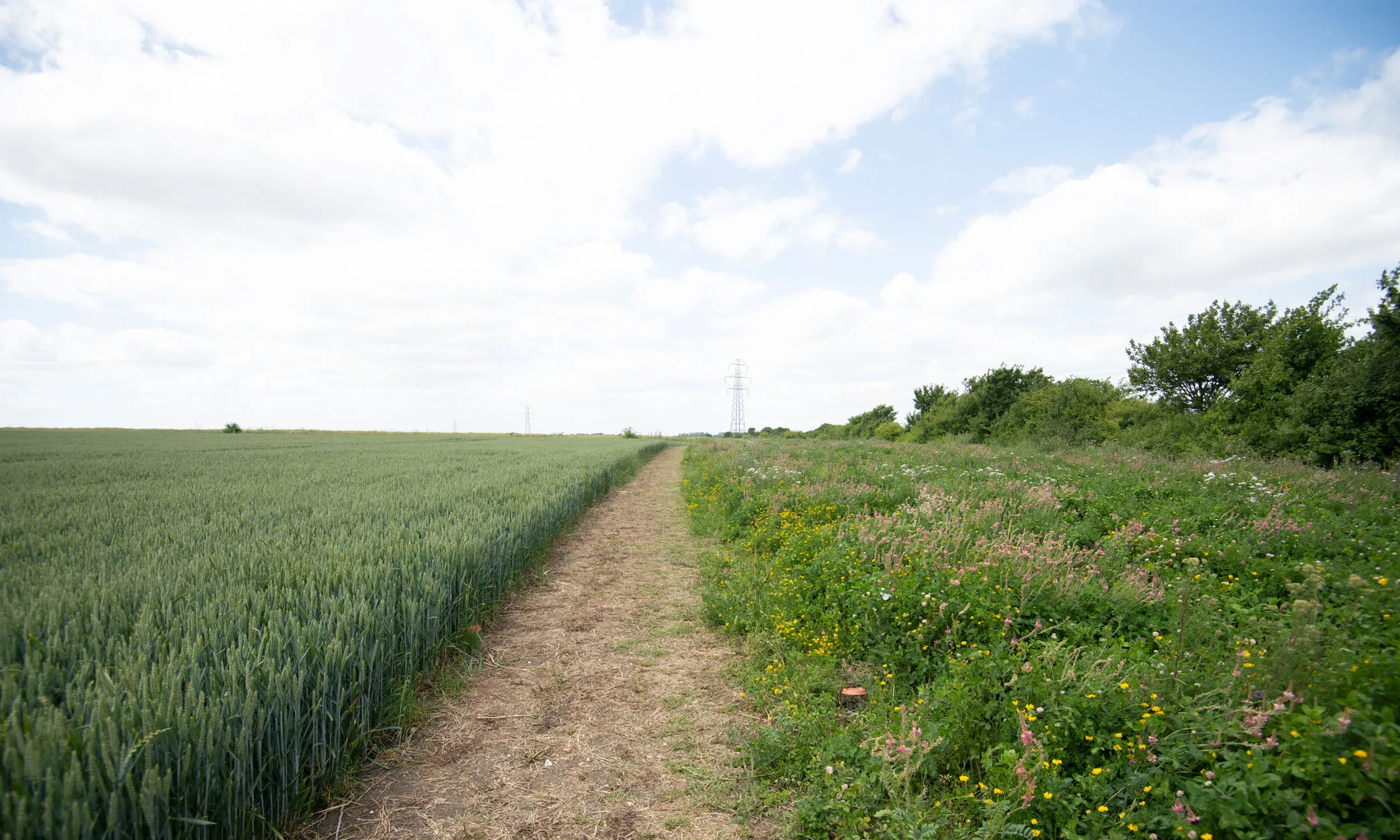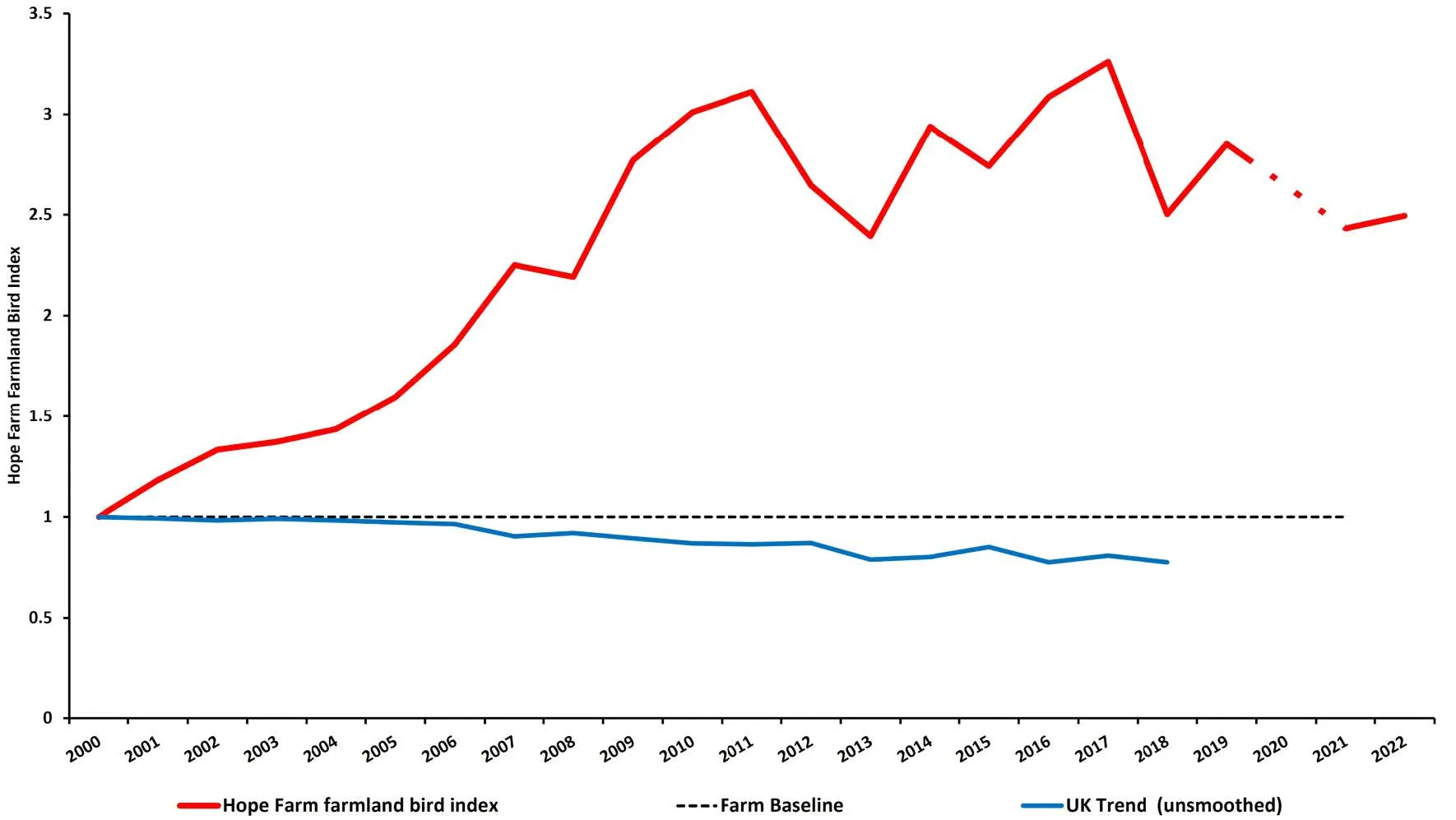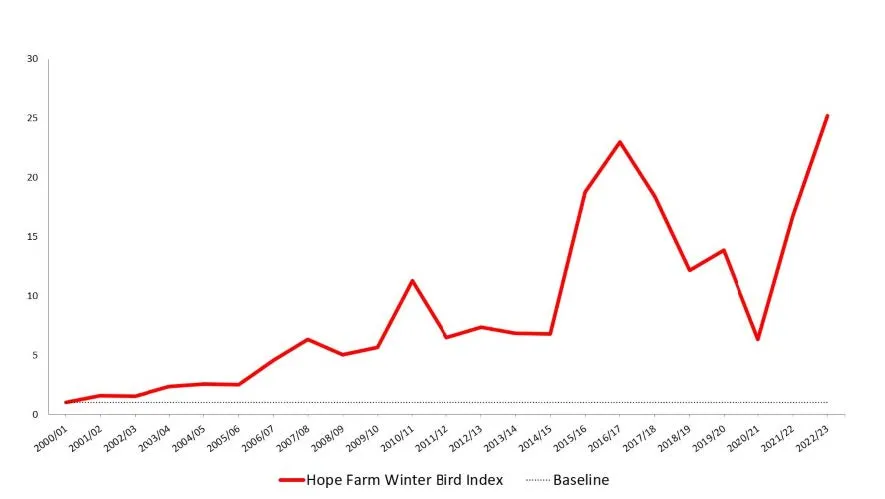A boom in farmland wildlife at Hope Farm
Since 2000, we have seen a steady rise in numbers of arable farmland birds breeding at Hope Farm.

On this page
Birds at Hope Farm
Breeding farmland birds like the linnet, yellowhammer, reed bunting and skylark have at least tripled in number. Lapwings, grey partridges, corn buntings, and yellow wagtails have all returned as breeding species.
Good practice such as reducing how many times we cut our hedgerows, providing insect-rich flower habitats, and seed-rich habitats have helped to provide food and shelter for wildlife around our fields. Meanwhile, within crop, we provide a safe nesting space with lapwing and skylark plots, use no insecticides, and have reduced pesticide and inorganic fertiliser use. Our soils are managed to promote richer habitats for invertebrates that help us to grow crops but provide vital insect habitat and bird food too.
In 1999, the Government set a target of reversing the decline in farmland birds by 2020. Unfortunately farmland birds are still in decline, but we are now looking to 2030, by which time global governments have promised to halt biodiversity loss. To put evidence behind these promises, we can look to indicators like the Farmland Bird Indicator (FBI), which is measured by the collective population trend of the 19 bird species that are most dependent on farmland in the UK.
At Hope Farm, the same measure shows we have not only reversed the decline but produced a major increase since purchasing the farm.
Birds are not only flourishing in the breeding season. In winter, the number of birds using the farm has also increased. Regular visitors include fieldfares and redwings, large flocks of reed buntings and yellowhammers as well as our resident barn owls hunting at dusk over the stubble fields.
Hope Farm 2000–2022 Farmland Bird Indicator graph (2000 = 1.0)

Our findings
Birds are not only flourishing in the breeding season. In winter, numbers of birds using the farm have increased with an underlying trend of over 1300% since the 1999-2000 winter. This is after recording 6574 birds of 52 species in 2022-23 compared to 1178 birds of 32 species in our first winter. On single morning surveys, bunting and finch numbers often reach into four figures compared to a handful scattered across the farm in 2000.
Lapwings often flock to find food on our fields. Skylarks, linnets, starlings and grey partridges are found aplenty, and our resident barn owls hunt at dusk over our tussocky grass margins and agroforestry field.

Butterflies at Hope Farm
Butterflies thrive along our wildflower margins and on the rest of the farm, indicating the impact we are having on wider pollinator species. Compared to the baseline set in 2001, over 20 years of monitoring data now shows an incredible increase in abundance and diversity of our butterflies, with 29 species recorded in that time. In 2022, we recorded 4506 butterflies of 25 species. Since 2001, an underlying trend with a 398% increase has been recorded.
